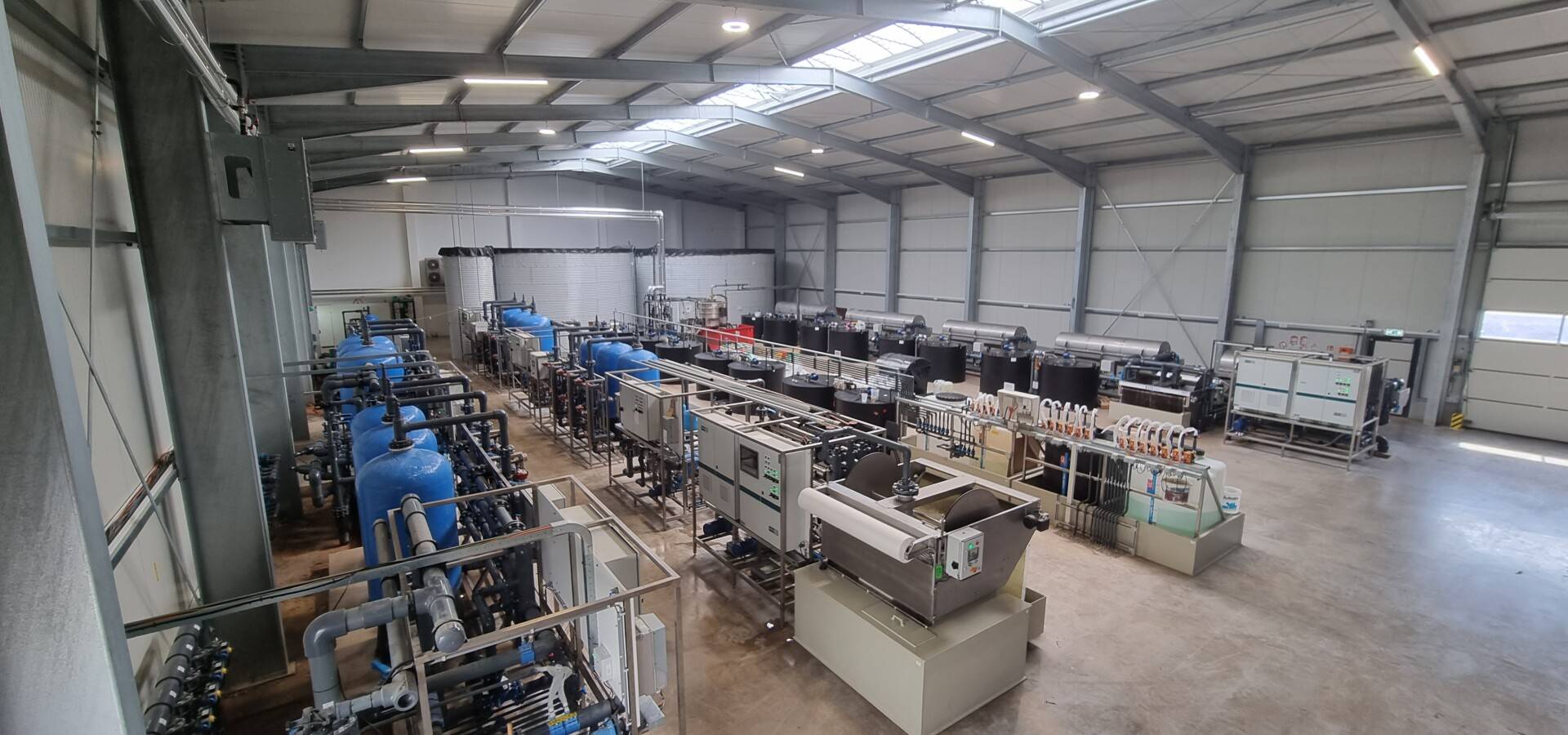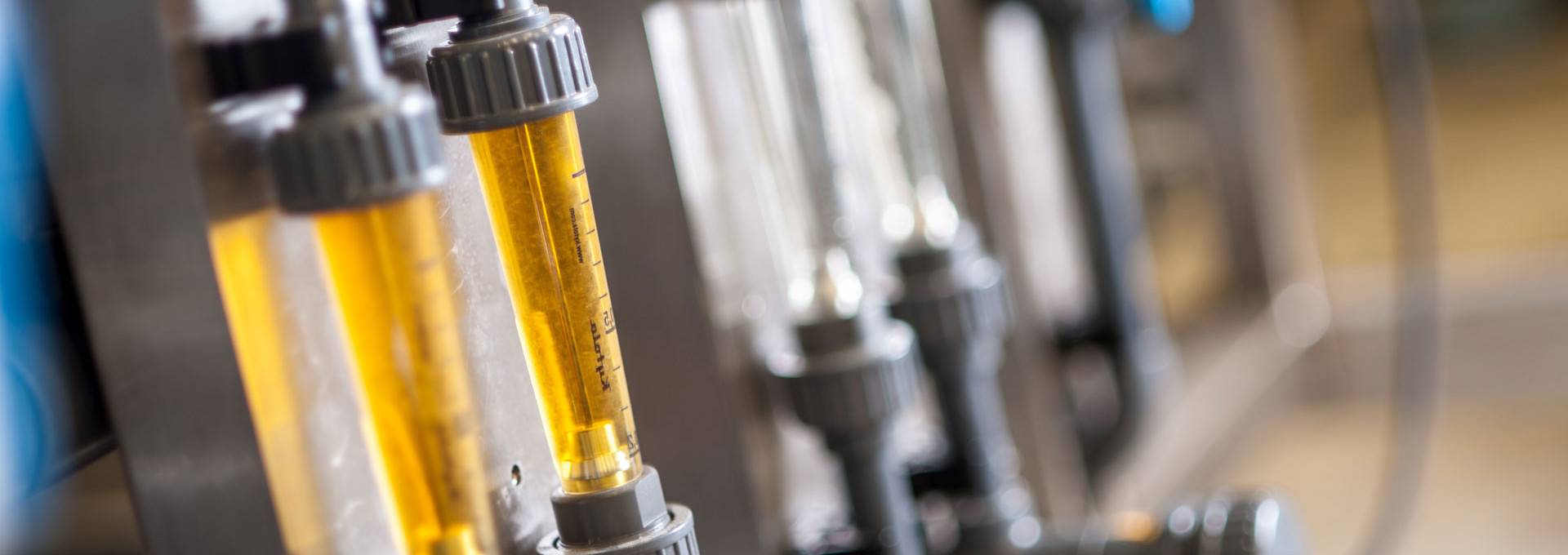 Water
Water
Good water management is crucial for a healthy crop. Not every plant species is the same and every crop has its own needs. Our specialists know that every crop requires a different dosage of nutrients and water to achieve optimum growth. We design and install customized water installations, tailored to your crop needs. We work with sustainable closed systems, so water is not wasted but can be reused after cleaning. Our installations are designed with cost efficiency, risk reduction and sustainability in mind. The design, construction and maintenance of the installations are entirely in-house.
The right nutrients for your crop
Plants need more than just water to grow optimally. Cogas Climate Control has both systems for liquid fertilisers and solutions for solid fertilisers. For solid fertilisers, AB-trays can be installed, to which exactly the right amount of each substance can be added. After adding water and mixing everything into a homogeneous product, control measurements such as pH and EC are carried out. After this, the nutrients can be pumped to the crop using our fully automatic substrate units.
Liquid fertilisers can also be pumped to AB containers using automatic container fillers, a Nutronic or a derivative. When all substances are properly mixed, the water -after control measurements such as pH and EC- goes to the crop.
In addition, when using liquid fertilisers, it is possible to make smaller batches. The substrate unit ensures that the mixture goes towards small daily storage silos, from where it goes to drippers via a pumping system.
Water management
Water not absorbed by the crop is collected via a cultivation gutter and stored in a drain pit. This water then goes to a dirty water drain silo. From this silo, the drain water is treated with ozone, UV, ultrafiltration, heating or another form (depending on your preference and the crop). From here, the sanitized drain water enters a clean water drain tank, ready for reuse. Some nutrients will still be present in the water. The treated drain water is supplemented with nutrients and some new water. That new water is in most cases rainwater, which is collected in a basin. The big advantage of the closed system is that fertilizers that are still in the drain water can be reused. So you waste fewer substances and have lower costs when buying new fertilizers.
Water treatment
Water treatment is more than just water disinfection. We pay attention to the entire water system, the oxygen level in the water, the water quality of the water going to cultivation and the water quality of the water that is eventually returned. However, water disinfection is an important part of water treatment. A good water disinfection system is becoming increasingly important. Due to climate change, rainfall is difficult to predict, more diseases such as ToBRFV need to be prevented and food safety is becoming stricter.
Water disinfection can be done in several ways. These include heating, UV radiation or Nano-filtering. But these ways have drawbacks such as capacity and control. A nice alternative is ozone. This is a natural gas produced from oxygen. Ozone is 300 times stronger and 3,000 times faster than chlorine and leaves no residue/chemicals. Ozone has some nice benefits:
- 100% killing of bacteria and moulds;
- No residues and resistance possible;
- EC and pH levels remain intact;
- 200-300% increase in oxygen levels in the water;
- Adjustable water quality;
- Removal of growth inhibitors/pesticides;
- Improved root growth by adding oxygen to the water;
- No chemistry.













